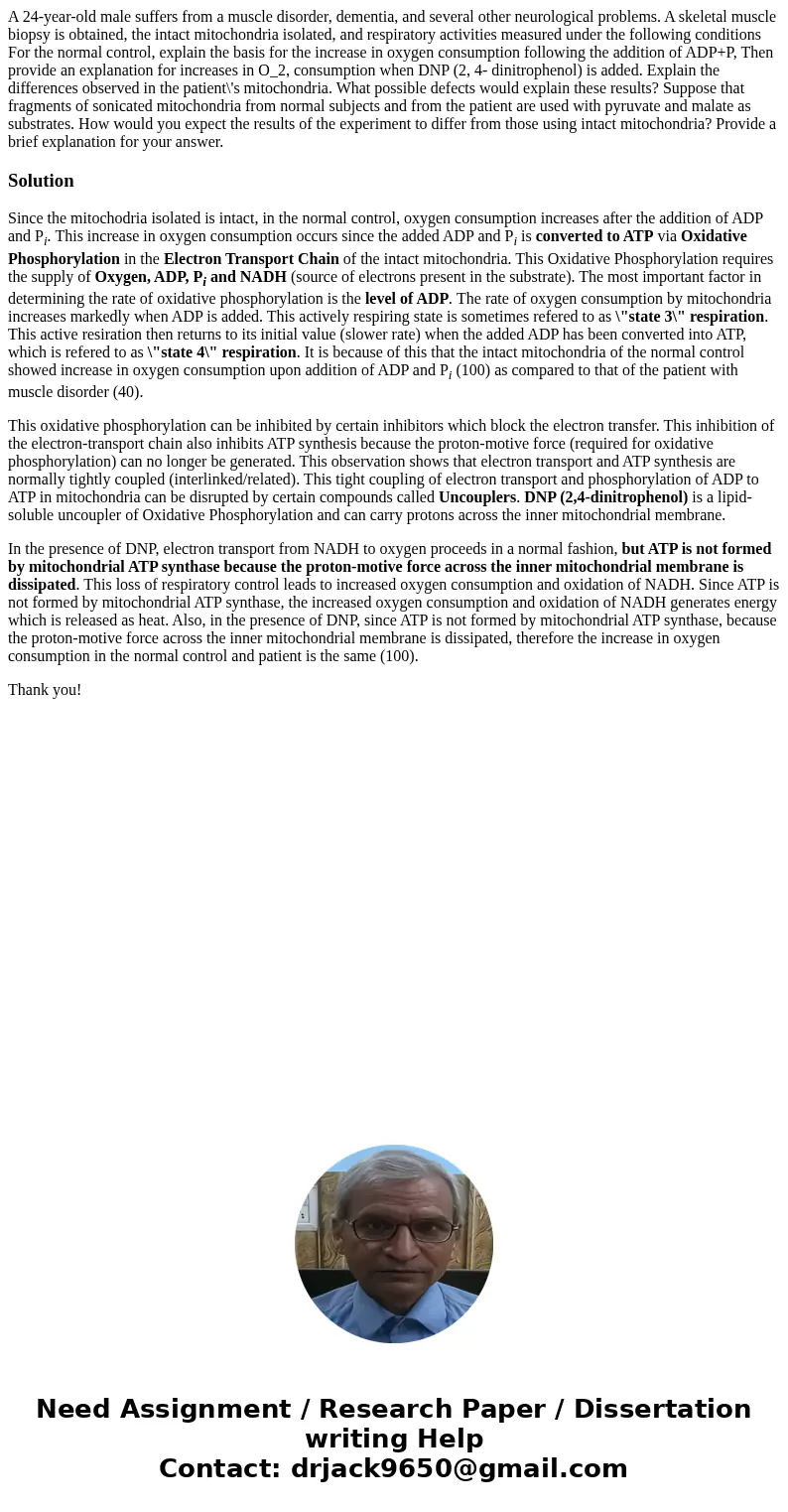A 24yearold male suffers from a muscle disorder dementia and
Solution
Since the mitochodria isolated is intact, in the normal control, oxygen consumption increases after the addition of ADP and Pi. This increase in oxygen consumption occurs since the added ADP and Pi is converted to ATP via Oxidative Phosphorylation in the Electron Transport Chain of the intact mitochondria. This Oxidative Phosphorylation requires the supply of Oxygen, ADP, Pi and NADH (source of electrons present in the substrate). The most important factor in determining the rate of oxidative phosphorylation is the level of ADP. The rate of oxygen consumption by mitochondria increases markedly when ADP is added. This actively respiring state is sometimes refered to as \"state 3\" respiration. This active resiration then returns to its initial value (slower rate) when the added ADP has been converted into ATP, which is refered to as \"state 4\" respiration. It is because of this that the intact mitochondria of the normal control showed increase in oxygen consumption upon addition of ADP and Pi (100) as compared to that of the patient with muscle disorder (40).
This oxidative phosphorylation can be inhibited by certain inhibitors which block the electron transfer. This inhibition of the electron-transport chain also inhibits ATP synthesis because the proton-motive force (required for oxidative phosphorylation) can no longer be generated. This observation shows that electron transport and ATP synthesis are normally tightly coupled (interlinked/related). This tight coupling of electron transport and phosphorylation of ADP to ATP in mitochondria can be disrupted by certain compounds called Uncouplers. DNP (2,4-dinitrophenol) is a lipid-soluble uncoupler of Oxidative Phosphorylation and can carry protons across the inner mitochondrial membrane.
In the presence of DNP, electron transport from NADH to oxygen proceeds in a normal fashion, but ATP is not formed by mitochondrial ATP synthase because the proton-motive force across the inner mitochondrial membrane is dissipated. This loss of respiratory control leads to increased oxygen consumption and oxidation of NADH. Since ATP is not formed by mitochondrial ATP synthase, the increased oxygen consumption and oxidation of NADH generates energy which is released as heat. Also, in the presence of DNP, since ATP is not formed by mitochondrial ATP synthase, because the proton-motive force across the inner mitochondrial membrane is dissipated, therefore the increase in oxygen consumption in the normal control and patient is the same (100).
Thank you!

 Homework Sourse
Homework Sourse